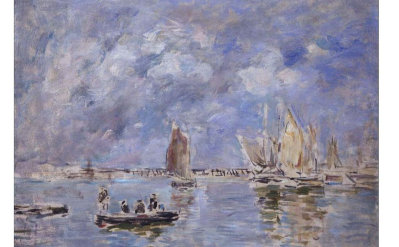Events calendar

Art and art of living in the 18th century
Musée Carnavalet, step by step
In the delicate woodwork of bygone hotels, the fine furniture of the great Parisian cabinetmakers served a refined society. A century that saw the triumph of women and elegance. The spirit of the Enlightenment.
After a salon with Far Eastern decor, a room is dedicated to the Regency period and the early reign of Louis XV. When Louis XIV died in 1715, Louis XV was too young to reign, and a period of regency was established until 1723. Versailles was no longer the royal residence; political, administrative and economic decisions were made in the capital.
The 1730s to 1750s are developed in six period rooms known as "salles Bouvier", in accordance with the terms of a major bequest from a Parisian antique dealer. The furniture and decorative arts on display reflect the lifestyle of privileged social groups. Each piece testifies to the creativity and quality of18th-century Parisian craftsmanship, enriched by the history of the trades and neighborhoods in which they were established. Cabinetmakers, carpenters, sculptors, clockmakers, bronzeworkers, foundry workers and gilders have all worked to pass on a unique savoir-faire over several generations. The homes of wealthy Parisians were transformed. New, lighter and more varied furnishings were introduced. Tableware, with its goldsmiths, ceramists and glassmakers, demonstrated a high level of refinement.
Parisian interiors from the second half of the 18th century are presented in four "Breteuil rooms", arranged in a row. These are followed by three rooms devoted to the undeveloped spaces of the capital at the time. Firstly, the Jardin des Plantes as a space for scientific study; secondly, the follies and picturesque gardens created in and around the city; and thirdly, the open-air performance spaces for audiences who came to watch, for example, the start of a balloon flight or a fireworks display.
The development and embellishment of Paris under the reigns of Louis XV and Louis XVI are presented in the three "Conflans rooms".
The tour then continues with a focus on architect Nicolas Ledoux.
First, the Café Militaire, reserved for officers, on rue Saint-Honoré, opened in 1762. The decoration was entrusted to a young, as yet unknown architect, Claude-Nicolas Ledoux. On either side of the four panels on display, beams and helmets structure the décor, with trophies representing Athena's shield with Medusa's head, the club and the sword.the head of Medusa, Hercules' club, the remains of the Nemean lion and Jupiter's thunderbolt, evoking strength, generosity, speed and invincibility.
Next, the salon de compagnie at the Hôtel d'Uzès. In 1768, the owner, the Duc d'Uzès, commissioned Claude-Nicolas Ledoux to carry out major renovation work. The architect was also commissioned to decorate the salon de compagnie, lit by two French windows opening onto the garden. The décor is punctuated by four alternating mirrors, four double doors and six large panels sculpted with trophies of arms hanging from laurels. The doors depict the four parts of the world, following the iconography of Italian Renaissance author Cesare Ripa: the alligator evokes America, the dromedary Africa, the elephant Asia and the horse Europe.
The final part of the tour is devoted to the intellectual influence of Paris and the key players of the Age of Enlightenment. On either side of the Palier de Luynes, encyclopedists Denis Diderot and Jean Le Rond d'Alembert face philosophers Voltaire and Jean-Jacques Rousseau. A number of objects belonging to them or bearing their effigies are on display, testifying to their great popularity. In the next room, the exchanges between France and the United States of America during their conquest of independence are discussed, under the tutelary figure of Benjamin Franklin.
The section ends with Pierre-Augustin Caron de Beaumarchais, another ardent defender of freedom of expression, whose writings foreshadowed the French Revolution.
Free admission, speaker to be paid on registration.
See all events
Saturday 11 March 2023
12:00
- 13:30
(GMT +2)
Registration deadline : 8th March
Carnavalet Museum
23 Rue de Sévigné
75003
Paris
-
20 € Contributor rate
-
25 € Non-contributing or external rate
Registration closed
Carnavalet Museum
23 Rue de Sévigné75003 Paris
Additional information (parking, underground, etc.)
Metro: line 1: Stop Saint-Paul line 5: Stop Bréguet Sabin line 7: Stop Pont-Marie line 8: Stop Chemin Vert Vélib' station: Station no. 3002 Saint-Gilles - Turenne Station no. 4010 Saint-Antoine - Sévigné Bus: lines 96 (Place des Vosges), 91
No comment
Log in to post comment. Log in.










